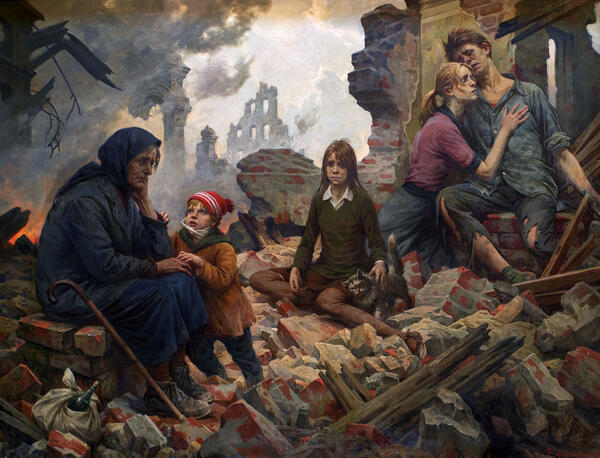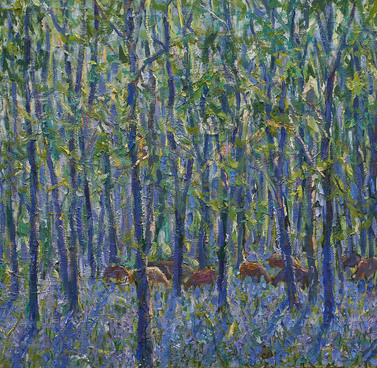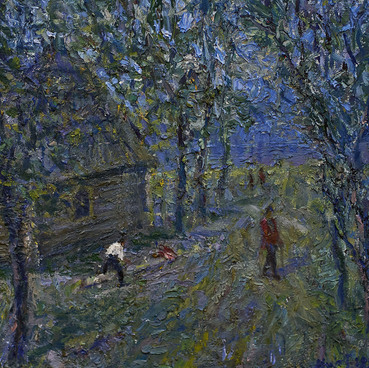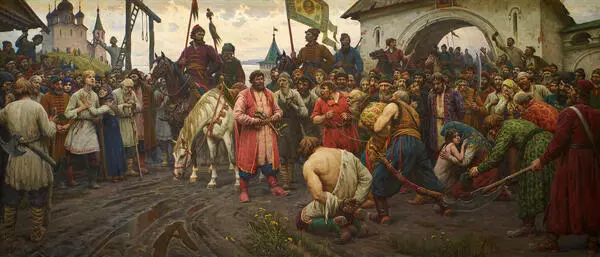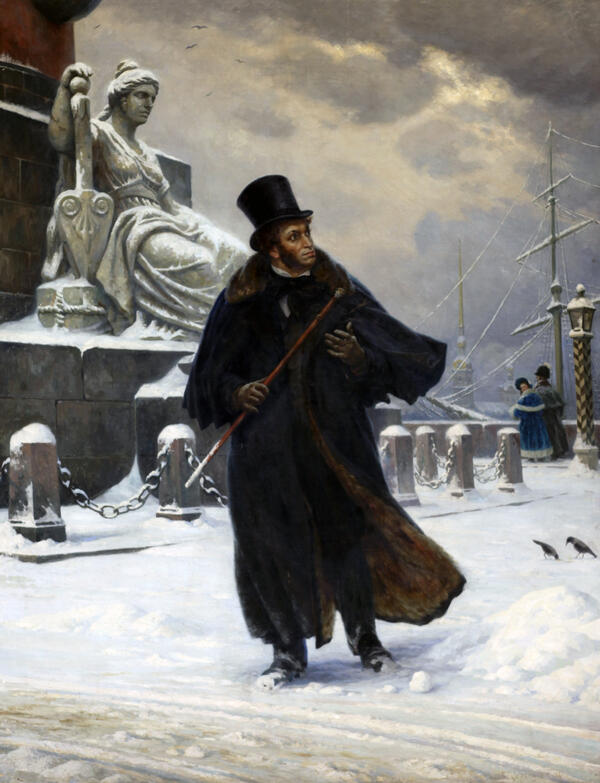The ‘More Sinned against than Sinning’ canvas is created by an artist Boris Shcherbakov. It takes a prominent place in the permanent exposition of the Valuy Museum of History and Art.
Boris Shcherbakov is the son of the artist Valentin Shcherbakov, who studied with Ilya Repin. He was born in 1916 in Petrograd. The family had to move to their father’s home in Kazan due the October Revolution and the Civil War. It was only in the 1930s that the Shcherbakovs could come back to St. Petersburg.
From 1933 to 1939, Boris Shcherbakov studied at the Academy of Arts of the USSR, where Isaac Brodsky, Vasily Yakovlev, and Petr Shukhmin used to teach.
Boris Shcherbakov became known as a master of landscape painting. It is this particular genre that made him popular. In Soviet times, Shcherbakov’s works were in demand from the Ministry of Foreign Affairs of the USSR. The staff of these departments purchased his paintings to embellish the interiors of embassies and diplomatic missions abroad and gifts to foreign heads of state.
The work of the corresponding member of the Academy of Arts of the USSR, People’s Artist of the USSR, and a laureate of the State Prize of the USSR Boris Shcherbakov are venerated both in Russia and abroad. His numerous exhibitions have always attracted public attention and received notices from critics. The artist’s work is dominated by its narrative works depicting genre scenes, as well as historical canvases, including ‘The Pravda Editorial Office in 1917’, ‘Ashes of Buchenwald, ’ and many other canvases.
Boris Shcherbakov painted ‘More Sinned against than Sinning’ in 1985. He dedicated this work to the events that occurred during the Great Patriotic War. Namely, the city of Leningrad, which was besieged for almost 900 days.
On the canvas, the artist depicted five people sitting on the ruins of a destroyed brick building. In the center of the canvas, there is a teenage girl who most likely doesn’t have anyone left, a cat is rubbing against her leg next to her. As if it is trying to comfort her owner. At the forefront on the left, there is an elderly woman in a blue headscarf with a little child leaning on her. A walking stick and a bundle of modest belongings is to her right. In the right part of the canvas, there is a young couple: a young girl is hugging a wounded guy dressed in torn clothes. The eyes of the characters are contorted in terror and despair. In the background, Shcherbakov depicted an invisible horizon, where the smoke shows what is left of buildings: the walls being ruined and wreckage. The canvas also has an unofficial name — “The World”s Evil”.
Boris Shcherbakov is the son of the artist Valentin Shcherbakov, who studied with Ilya Repin. He was born in 1916 in Petrograd. The family had to move to their father’s home in Kazan due the October Revolution and the Civil War. It was only in the 1930s that the Shcherbakovs could come back to St. Petersburg.
From 1933 to 1939, Boris Shcherbakov studied at the Academy of Arts of the USSR, where Isaac Brodsky, Vasily Yakovlev, and Petr Shukhmin used to teach.
Boris Shcherbakov became known as a master of landscape painting. It is this particular genre that made him popular. In Soviet times, Shcherbakov’s works were in demand from the Ministry of Foreign Affairs of the USSR. The staff of these departments purchased his paintings to embellish the interiors of embassies and diplomatic missions abroad and gifts to foreign heads of state.
The work of the corresponding member of the Academy of Arts of the USSR, People’s Artist of the USSR, and a laureate of the State Prize of the USSR Boris Shcherbakov are venerated both in Russia and abroad. His numerous exhibitions have always attracted public attention and received notices from critics. The artist’s work is dominated by its narrative works depicting genre scenes, as well as historical canvases, including ‘The Pravda Editorial Office in 1917’, ‘Ashes of Buchenwald, ’ and many other canvases.
Boris Shcherbakov painted ‘More Sinned against than Sinning’ in 1985. He dedicated this work to the events that occurred during the Great Patriotic War. Namely, the city of Leningrad, which was besieged for almost 900 days.
On the canvas, the artist depicted five people sitting on the ruins of a destroyed brick building. In the center of the canvas, there is a teenage girl who most likely doesn’t have anyone left, a cat is rubbing against her leg next to her. As if it is trying to comfort her owner. At the forefront on the left, there is an elderly woman in a blue headscarf with a little child leaning on her. A walking stick and a bundle of modest belongings is to her right. In the right part of the canvas, there is a young couple: a young girl is hugging a wounded guy dressed in torn clothes. The eyes of the characters are contorted in terror and despair. In the background, Shcherbakov depicted an invisible horizon, where the smoke shows what is left of buildings: the walls being ruined and wreckage. The canvas also has an unofficial name — “The World”s Evil”.

